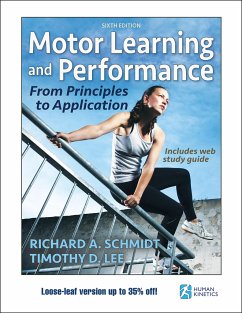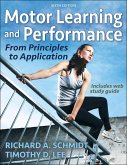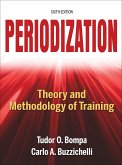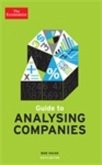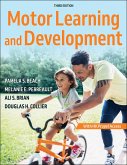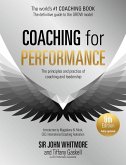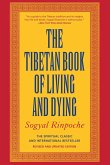Richard A. Schmidt, Timothy D. Lee
Motor Learning and Performance 6th Edition With Web Study Guide-Loose-Leaf Edition
From Principles to Application
Richard A. Schmidt, Timothy D. Lee
Motor Learning and Performance 6th Edition With Web Study Guide-Loose-Leaf Edition
From Principles to Application
- Loseblattsammlung
- Merkliste
- Auf die Merkliste
- Bewerten Bewerten
- Teilen
- Produkt teilen
- Produkterinnerung
- Produkterinnerung
Motor Learning and Performance, Sixth Edition, constructs a conceptual model of factors that influence motor performance, outlines how motor skills are acquired and retained with practice, and shows how to apply those concepts to a variety of real-world settings.
Andere Kunden interessierten sich auch für
![Motor Learning and Performance Motor Learning and Performance]() Richard A. SchmidtMotor Learning and Performance143,99 €
Richard A. SchmidtMotor Learning and Performance143,99 €![Periodization-6th Edition Periodization-6th Edition]() Tudor BompaPeriodization-6th Edition80,99 €
Tudor BompaPeriodization-6th Edition80,99 €![Black and Decker The Complete Guide to Bathrooms Updated 6th Edition Black and Decker The Complete Guide to Bathrooms Updated 6th Edition]() Editors of Cool Springs PressBlack and Decker The Complete Guide to Bathrooms Updated 6th Edition25,99 €
Editors of Cool Springs PressBlack and Decker The Complete Guide to Bathrooms Updated 6th Edition25,99 €![The Economist Guide To Analysing Companies 6th edition The Economist Guide To Analysing Companies 6th edition]() Bob VauseThe Economist Guide To Analysing Companies 6th edition19,99 €
Bob VauseThe Economist Guide To Analysing Companies 6th edition19,99 €![Motor Learning and Development Motor Learning and Development]() Pamela S. BeachMotor Learning and Development137,99 €
Pamela S. BeachMotor Learning and Development137,99 €![Coaching for Performance, 6th edition Coaching for Performance, 6th edition]() Sir John WhitmoreCoaching for Performance, 6th edition24,99 €
Sir John WhitmoreCoaching for Performance, 6th edition24,99 €![The Tibetan Book of Living and Dying The Tibetan Book of Living and Dying]() Sogyal RinpocheThe Tibetan Book of Living and Dying22,99 €
Sogyal RinpocheThe Tibetan Book of Living and Dying22,99 €-
-
-
Motor Learning and Performance, Sixth Edition, constructs a conceptual model of factors that influence motor performance, outlines how motor skills are acquired and retained with practice, and shows how to apply those concepts to a variety of real-world settings.
Hinweis: Dieser Artikel kann nur an eine deutsche Lieferadresse ausgeliefert werden.
Hinweis: Dieser Artikel kann nur an eine deutsche Lieferadresse ausgeliefert werden.
Produktdetails
- Produktdetails
- Verlag: Human Kinetics Publishers
- Sixth Edition
- Seitenzahl: 328
- Erscheinungstermin: 18. September 2019
- Englisch
- Abmessung: 276mm x 213mm x 17mm
- Gewicht: 1062g
- ISBN-13: 9781492574682
- ISBN-10: 1492574686
- Artikelnr.: 56713426
- Herstellerkennzeichnung
- Libri GmbH
- Europaallee 1
- 36244 Bad Hersfeld
- gpsr@libri.de
- Verlag: Human Kinetics Publishers
- Sixth Edition
- Seitenzahl: 328
- Erscheinungstermin: 18. September 2019
- Englisch
- Abmessung: 276mm x 213mm x 17mm
- Gewicht: 1062g
- ISBN-13: 9781492574682
- ISBN-10: 1492574686
- Artikelnr.: 56713426
- Herstellerkennzeichnung
- Libri GmbH
- Europaallee 1
- 36244 Bad Hersfeld
- gpsr@libri.de
Richard A. Schmidt, PhD (1941-2015) was a professor emeritus in the department of psychology at UCLA. At the time of his death, Schmidt ran his own business, Human Performance Research, conducting research and consulting in the area of human factors and human performance. Widely acknowledged as one of the leaders in research on motor behavior, he had more than 40 years of experience in the area of motor learning and performance. The originator of both schema theory and impulse-variability theory (aka “Schmidt’s Law”), he founded the Journal of Motor Behavior in 1969 and was editor for 11 years. He authored the first edition of Motor Control and Learning in 1982 and the first edition of this book, Motor Learning and Performance, in 1991. Schmidt was highly recognized for his contribution of a lifetime of research and writing. In recognition of his work, he received honorary doctorates from the Catholic University of Leuven in Belgium (in 1992) and the Université Joseph Fourier in France (in 1998). He was a longtime member of the North American Society for the Psychology of Sport and Physical Activity (NASPSPA), where he served as president in 1982 and received the organization’s two highest honors: the Distinguished Scholar Award for lifetime contributions to research in motor control and learning (in 1992) and the President’s Award for significant contributions to the development and growth of NASPSPA (in 2013). He was also a member of the Human Factors and Ergonomics Society and the Psychonomic Society and received the C.H. McCloy Research Lectureship from the American Alliance for Health, Physical Education, Recreation and Dance. His leisure-time passions included sailboat and Porsche racing. Timothy D. Lee, PhD, is a professor emeritus in the department of kinesiology at McMaster University in Hamilton, Ontario. He has published extensively in motor behavior and psychology journals since 1980, served as an editor for the Journal of Motor Behavior and Research Quarterly for Exercise and Sport, and has been an editorial board member for Psychological Review. Until his retirement in 2014, his research was supported primarily by grants from the Natural Sciences and Engineering Research Council of Canada. Tim has been a member, secretary-treasurer, and president of the Canadian Society for Psychomotor Learning and Sport Psychology (SCAPPS) and a member of the North American Society for the Psychology of Sport and Physical Activity (NASPSPA), the Psychonomic Society, and the Human Factors and Ergonomics Society. In 1980 Tim received the inaugural Young Scientist Award from SCAPPS, and in 2011 he was named a fellow of the society—its highest honor. He was named an international fellow by the National Academy of Kinesiology in 1999 and awarded the Distinguished Scholar Award by NASPSPA in 2017. Tim is an avid golfer who competes in local, national, and international tournaments. He teamed with a good friend to win the Ontario Senior Better Ball Championship in 2017.
Chapter 1. Introduction to Motor Learning and Performance
Why Study Motor Skills?
The Science of Motor Learning and Performance
Focus on Research 1.1: Paul M. Fitts
Focus on Research 1.2: Franklin M. Henry, Father of Motor Behavior Research
Defining Skills
Components of Skills
Classifying Skills
Measuring Skilled Performance
Understanding Performance and Learning
Summary
Learning Aids
Part I. Principles of Skilled Performance
Chapter 2. Processing Information and Making Decisions
The Information-Processing Approach
Focus on Application 2.1: Intent to Blow Whistle Rule in NHL
Reaction Time and Decision Making
Focus on Research 2.1: Donders’ Stages of Processing
Focus on Research 2.2: Hick’s Law
Focus on Application 2.2: Light Switches
Focus on Research 2.3: Assessing Anticipation Skills
Focus on Application 2.3: Cost/Benefit of Anticipating in Sprint Starting
Memory Systems
Summary
Learning Aids
Chapter 3. Attention and Performance
Focus on Application 3.1: William James on Attention
What Is Attention?
Limitations in Stimulus Identification
Focus on Research 3.1: Automatic Stimulus Processing in Basketball
Limitations in Response Selection
Focus on Research 3.2: Distracted-Driving Research
Limitations in Movement Programming
Focus on Research 3.3: The Double-Stimulation Paradigm
Focus of Attention During Action
Decision Making Under Stress
Focus on Application 3.2: Driver Panic and Unintended Acceleration
Summary
Learning Aids
Chapter 4. Sensory Contributions to Skilled Performance
Sources of Sensory Information
Processing Sensory Information
Focus on Application 4.1: Force Escalation Between Siblings
Principles of Visual Control
Focus on Research 4.1: “Blindsight” Reveals Dorsal and Ventral Stream
Processing
Focus on Research 4.2: Gaze Control
Focus on Application 4.2: Visibility in Nighttime Car–Truck Accidents
Audition and Motor Control
Focus on Application 4.3: When Vision Distorts Performance
Summary
Learning Aids
Chapter 5. Motor Programs
Motor Program Theory
Evidence for Motor Programs
Focus on Research 5.1: The Henry–Rogers Experiment
Focus on Application 5.1: Checked Swings in Baseball
Focus on Research 5.2: Initiating a Motor Program
Motor Programs and the Conceptual Model
Problems in Motor Program Theory: Novelty and Storage
Generalized Motor Program Theory
Focus on Research 5.3: Invariances and Parameters
Focus on Application 5.2: Relative-Timing Fingerprints
Focus on Application 5.3: The Stereo System Analogy
Summary
Learning Aids
Chapter 6. Principles of Speed, Accuracy, and Timing
Fitts’ Law
Focus on Research 6.1: The Fitts Tasks
Focus on Application 6.1: Fitts’ Law in Everyday Actions
Schmidt’s Law
Speed–Accuracy Trade-Off Exceptions
Applying the Principles: Baseball Batting
Speed of Initiating Movement
Summary
Learning Aids
Chapter 7. Performance of Complex Movements
Traditional Approaches to Studying Complex Movement
Focus on Application 7.1: The Relative-Age Effect
Coordinating Discrete Movements
Focus on Research 7.1: Coordination in Golf Putting
Coordinating Continuous Movements
Focus on Research 7.2: Relative Phase: An Index of Coordination
Summary
Learning Aids
Part II. Principles of Skill Learning
Chapter 8. Introduction to Motor Learning
Motor Learning Defined
How Is Motor Learning Measured?
Focus on Research 8.1: Learning Curves: Facts or Artifacts?
Distinguishing Learning from Performance
Focus on Application 8.1: Self-Assessments of Learning
Transfer of Learning
Summary
Learning Aids
Chapter 9. The Motor Learning Process
Skill Acquisition
Focus on Research 9.1: Learning Never Ends
Focus on Application 9.1: Fitts and Bernstein on Learning to Play Ice
Hockey
Focus on Research 9.2: A Constraints-Led Approach to Baseball Batting
Skill Retention
Skill Transfer
Summary
Learning Aids
Chapter 10. Organizing and Scheduling Practice
Motivation for Learning
Attentional Focus
Demonstrations and Modeling
Mental Practice
Focus on Application 10.1: Mental Practice in Stroke Rehabilitation
Organizing Practice and Rest Periods
Variable and Constant Practice
Focus on Research 10.1: Especial Skills: An Exception to Variable Practice?
Blocked and Random Practice
Summary
Learning Aids
Chapter 11. Augmented Feedback
Feedback Classifications
Functions of Augmented Feedback
Focus on Research 11.1: How Feedback Works
What Feedback to Give
How Much Feedback to Give
Feedback Timing
Focus on Application 11.1: Physical Guidance in Stroke Rehabilitation
Focus on Application 11.2: Physical Guidance in Learning to Swim
Summary
Learning Aids
Why Study Motor Skills?
The Science of Motor Learning and Performance
Focus on Research 1.1: Paul M. Fitts
Focus on Research 1.2: Franklin M. Henry, Father of Motor Behavior Research
Defining Skills
Components of Skills
Classifying Skills
Measuring Skilled Performance
Understanding Performance and Learning
Summary
Learning Aids
Part I. Principles of Skilled Performance
Chapter 2. Processing Information and Making Decisions
The Information-Processing Approach
Focus on Application 2.1: Intent to Blow Whistle Rule in NHL
Reaction Time and Decision Making
Focus on Research 2.1: Donders’ Stages of Processing
Focus on Research 2.2: Hick’s Law
Focus on Application 2.2: Light Switches
Focus on Research 2.3: Assessing Anticipation Skills
Focus on Application 2.3: Cost/Benefit of Anticipating in Sprint Starting
Memory Systems
Summary
Learning Aids
Chapter 3. Attention and Performance
Focus on Application 3.1: William James on Attention
What Is Attention?
Limitations in Stimulus Identification
Focus on Research 3.1: Automatic Stimulus Processing in Basketball
Limitations in Response Selection
Focus on Research 3.2: Distracted-Driving Research
Limitations in Movement Programming
Focus on Research 3.3: The Double-Stimulation Paradigm
Focus of Attention During Action
Decision Making Under Stress
Focus on Application 3.2: Driver Panic and Unintended Acceleration
Summary
Learning Aids
Chapter 4. Sensory Contributions to Skilled Performance
Sources of Sensory Information
Processing Sensory Information
Focus on Application 4.1: Force Escalation Between Siblings
Principles of Visual Control
Focus on Research 4.1: “Blindsight” Reveals Dorsal and Ventral Stream
Processing
Focus on Research 4.2: Gaze Control
Focus on Application 4.2: Visibility in Nighttime Car–Truck Accidents
Audition and Motor Control
Focus on Application 4.3: When Vision Distorts Performance
Summary
Learning Aids
Chapter 5. Motor Programs
Motor Program Theory
Evidence for Motor Programs
Focus on Research 5.1: The Henry–Rogers Experiment
Focus on Application 5.1: Checked Swings in Baseball
Focus on Research 5.2: Initiating a Motor Program
Motor Programs and the Conceptual Model
Problems in Motor Program Theory: Novelty and Storage
Generalized Motor Program Theory
Focus on Research 5.3: Invariances and Parameters
Focus on Application 5.2: Relative-Timing Fingerprints
Focus on Application 5.3: The Stereo System Analogy
Summary
Learning Aids
Chapter 6. Principles of Speed, Accuracy, and Timing
Fitts’ Law
Focus on Research 6.1: The Fitts Tasks
Focus on Application 6.1: Fitts’ Law in Everyday Actions
Schmidt’s Law
Speed–Accuracy Trade-Off Exceptions
Applying the Principles: Baseball Batting
Speed of Initiating Movement
Summary
Learning Aids
Chapter 7. Performance of Complex Movements
Traditional Approaches to Studying Complex Movement
Focus on Application 7.1: The Relative-Age Effect
Coordinating Discrete Movements
Focus on Research 7.1: Coordination in Golf Putting
Coordinating Continuous Movements
Focus on Research 7.2: Relative Phase: An Index of Coordination
Summary
Learning Aids
Part II. Principles of Skill Learning
Chapter 8. Introduction to Motor Learning
Motor Learning Defined
How Is Motor Learning Measured?
Focus on Research 8.1: Learning Curves: Facts or Artifacts?
Distinguishing Learning from Performance
Focus on Application 8.1: Self-Assessments of Learning
Transfer of Learning
Summary
Learning Aids
Chapter 9. The Motor Learning Process
Skill Acquisition
Focus on Research 9.1: Learning Never Ends
Focus on Application 9.1: Fitts and Bernstein on Learning to Play Ice
Hockey
Focus on Research 9.2: A Constraints-Led Approach to Baseball Batting
Skill Retention
Skill Transfer
Summary
Learning Aids
Chapter 10. Organizing and Scheduling Practice
Motivation for Learning
Attentional Focus
Demonstrations and Modeling
Mental Practice
Focus on Application 10.1: Mental Practice in Stroke Rehabilitation
Organizing Practice and Rest Periods
Variable and Constant Practice
Focus on Research 10.1: Especial Skills: An Exception to Variable Practice?
Blocked and Random Practice
Summary
Learning Aids
Chapter 11. Augmented Feedback
Feedback Classifications
Functions of Augmented Feedback
Focus on Research 11.1: How Feedback Works
What Feedback to Give
How Much Feedback to Give
Feedback Timing
Focus on Application 11.1: Physical Guidance in Stroke Rehabilitation
Focus on Application 11.2: Physical Guidance in Learning to Swim
Summary
Learning Aids
Chapter 1. Introduction to Motor Learning and Performance
Why Study Motor Skills?
The Science of Motor Learning and Performance
Focus on Research 1.1: Paul M. Fitts
Focus on Research 1.2: Franklin M. Henry, Father of Motor Behavior Research
Defining Skills
Components of Skills
Classifying Skills
Measuring Skilled Performance
Understanding Performance and Learning
Summary
Learning Aids
Part I. Principles of Skilled Performance
Chapter 2. Processing Information and Making Decisions
The Information-Processing Approach
Focus on Application 2.1: Intent to Blow Whistle Rule in NHL
Reaction Time and Decision Making
Focus on Research 2.1: Donders’ Stages of Processing
Focus on Research 2.2: Hick’s Law
Focus on Application 2.2: Light Switches
Focus on Research 2.3: Assessing Anticipation Skills
Focus on Application 2.3: Cost/Benefit of Anticipating in Sprint Starting
Memory Systems
Summary
Learning Aids
Chapter 3. Attention and Performance
Focus on Application 3.1: William James on Attention
What Is Attention?
Limitations in Stimulus Identification
Focus on Research 3.1: Automatic Stimulus Processing in Basketball
Limitations in Response Selection
Focus on Research 3.2: Distracted-Driving Research
Limitations in Movement Programming
Focus on Research 3.3: The Double-Stimulation Paradigm
Focus of Attention During Action
Decision Making Under Stress
Focus on Application 3.2: Driver Panic and Unintended Acceleration
Summary
Learning Aids
Chapter 4. Sensory Contributions to Skilled Performance
Sources of Sensory Information
Processing Sensory Information
Focus on Application 4.1: Force Escalation Between Siblings
Principles of Visual Control
Focus on Research 4.1: “Blindsight” Reveals Dorsal and Ventral Stream
Processing
Focus on Research 4.2: Gaze Control
Focus on Application 4.2: Visibility in Nighttime Car–Truck Accidents
Audition and Motor Control
Focus on Application 4.3: When Vision Distorts Performance
Summary
Learning Aids
Chapter 5. Motor Programs
Motor Program Theory
Evidence for Motor Programs
Focus on Research 5.1: The Henry–Rogers Experiment
Focus on Application 5.1: Checked Swings in Baseball
Focus on Research 5.2: Initiating a Motor Program
Motor Programs and the Conceptual Model
Problems in Motor Program Theory: Novelty and Storage
Generalized Motor Program Theory
Focus on Research 5.3: Invariances and Parameters
Focus on Application 5.2: Relative-Timing Fingerprints
Focus on Application 5.3: The Stereo System Analogy
Summary
Learning Aids
Chapter 6. Principles of Speed, Accuracy, and Timing
Fitts’ Law
Focus on Research 6.1: The Fitts Tasks
Focus on Application 6.1: Fitts’ Law in Everyday Actions
Schmidt’s Law
Speed–Accuracy Trade-Off Exceptions
Applying the Principles: Baseball Batting
Speed of Initiating Movement
Summary
Learning Aids
Chapter 7. Performance of Complex Movements
Traditional Approaches to Studying Complex Movement
Focus on Application 7.1: The Relative-Age Effect
Coordinating Discrete Movements
Focus on Research 7.1: Coordination in Golf Putting
Coordinating Continuous Movements
Focus on Research 7.2: Relative Phase: An Index of Coordination
Summary
Learning Aids
Part II. Principles of Skill Learning
Chapter 8. Introduction to Motor Learning
Motor Learning Defined
How Is Motor Learning Measured?
Focus on Research 8.1: Learning Curves: Facts or Artifacts?
Distinguishing Learning from Performance
Focus on Application 8.1: Self-Assessments of Learning
Transfer of Learning
Summary
Learning Aids
Chapter 9. The Motor Learning Process
Skill Acquisition
Focus on Research 9.1: Learning Never Ends
Focus on Application 9.1: Fitts and Bernstein on Learning to Play Ice
Hockey
Focus on Research 9.2: A Constraints-Led Approach to Baseball Batting
Skill Retention
Skill Transfer
Summary
Learning Aids
Chapter 10. Organizing and Scheduling Practice
Motivation for Learning
Attentional Focus
Demonstrations and Modeling
Mental Practice
Focus on Application 10.1: Mental Practice in Stroke Rehabilitation
Organizing Practice and Rest Periods
Variable and Constant Practice
Focus on Research 10.1: Especial Skills: An Exception to Variable Practice?
Blocked and Random Practice
Summary
Learning Aids
Chapter 11. Augmented Feedback
Feedback Classifications
Functions of Augmented Feedback
Focus on Research 11.1: How Feedback Works
What Feedback to Give
How Much Feedback to Give
Feedback Timing
Focus on Application 11.1: Physical Guidance in Stroke Rehabilitation
Focus on Application 11.2: Physical Guidance in Learning to Swim
Summary
Learning Aids
Why Study Motor Skills?
The Science of Motor Learning and Performance
Focus on Research 1.1: Paul M. Fitts
Focus on Research 1.2: Franklin M. Henry, Father of Motor Behavior Research
Defining Skills
Components of Skills
Classifying Skills
Measuring Skilled Performance
Understanding Performance and Learning
Summary
Learning Aids
Part I. Principles of Skilled Performance
Chapter 2. Processing Information and Making Decisions
The Information-Processing Approach
Focus on Application 2.1: Intent to Blow Whistle Rule in NHL
Reaction Time and Decision Making
Focus on Research 2.1: Donders’ Stages of Processing
Focus on Research 2.2: Hick’s Law
Focus on Application 2.2: Light Switches
Focus on Research 2.3: Assessing Anticipation Skills
Focus on Application 2.3: Cost/Benefit of Anticipating in Sprint Starting
Memory Systems
Summary
Learning Aids
Chapter 3. Attention and Performance
Focus on Application 3.1: William James on Attention
What Is Attention?
Limitations in Stimulus Identification
Focus on Research 3.1: Automatic Stimulus Processing in Basketball
Limitations in Response Selection
Focus on Research 3.2: Distracted-Driving Research
Limitations in Movement Programming
Focus on Research 3.3: The Double-Stimulation Paradigm
Focus of Attention During Action
Decision Making Under Stress
Focus on Application 3.2: Driver Panic and Unintended Acceleration
Summary
Learning Aids
Chapter 4. Sensory Contributions to Skilled Performance
Sources of Sensory Information
Processing Sensory Information
Focus on Application 4.1: Force Escalation Between Siblings
Principles of Visual Control
Focus on Research 4.1: “Blindsight” Reveals Dorsal and Ventral Stream
Processing
Focus on Research 4.2: Gaze Control
Focus on Application 4.2: Visibility in Nighttime Car–Truck Accidents
Audition and Motor Control
Focus on Application 4.3: When Vision Distorts Performance
Summary
Learning Aids
Chapter 5. Motor Programs
Motor Program Theory
Evidence for Motor Programs
Focus on Research 5.1: The Henry–Rogers Experiment
Focus on Application 5.1: Checked Swings in Baseball
Focus on Research 5.2: Initiating a Motor Program
Motor Programs and the Conceptual Model
Problems in Motor Program Theory: Novelty and Storage
Generalized Motor Program Theory
Focus on Research 5.3: Invariances and Parameters
Focus on Application 5.2: Relative-Timing Fingerprints
Focus on Application 5.3: The Stereo System Analogy
Summary
Learning Aids
Chapter 6. Principles of Speed, Accuracy, and Timing
Fitts’ Law
Focus on Research 6.1: The Fitts Tasks
Focus on Application 6.1: Fitts’ Law in Everyday Actions
Schmidt’s Law
Speed–Accuracy Trade-Off Exceptions
Applying the Principles: Baseball Batting
Speed of Initiating Movement
Summary
Learning Aids
Chapter 7. Performance of Complex Movements
Traditional Approaches to Studying Complex Movement
Focus on Application 7.1: The Relative-Age Effect
Coordinating Discrete Movements
Focus on Research 7.1: Coordination in Golf Putting
Coordinating Continuous Movements
Focus on Research 7.2: Relative Phase: An Index of Coordination
Summary
Learning Aids
Part II. Principles of Skill Learning
Chapter 8. Introduction to Motor Learning
Motor Learning Defined
How Is Motor Learning Measured?
Focus on Research 8.1: Learning Curves: Facts or Artifacts?
Distinguishing Learning from Performance
Focus on Application 8.1: Self-Assessments of Learning
Transfer of Learning
Summary
Learning Aids
Chapter 9. The Motor Learning Process
Skill Acquisition
Focus on Research 9.1: Learning Never Ends
Focus on Application 9.1: Fitts and Bernstein on Learning to Play Ice
Hockey
Focus on Research 9.2: A Constraints-Led Approach to Baseball Batting
Skill Retention
Skill Transfer
Summary
Learning Aids
Chapter 10. Organizing and Scheduling Practice
Motivation for Learning
Attentional Focus
Demonstrations and Modeling
Mental Practice
Focus on Application 10.1: Mental Practice in Stroke Rehabilitation
Organizing Practice and Rest Periods
Variable and Constant Practice
Focus on Research 10.1: Especial Skills: An Exception to Variable Practice?
Blocked and Random Practice
Summary
Learning Aids
Chapter 11. Augmented Feedback
Feedback Classifications
Functions of Augmented Feedback
Focus on Research 11.1: How Feedback Works
What Feedback to Give
How Much Feedback to Give
Feedback Timing
Focus on Application 11.1: Physical Guidance in Stroke Rehabilitation
Focus on Application 11.2: Physical Guidance in Learning to Swim
Summary
Learning Aids

